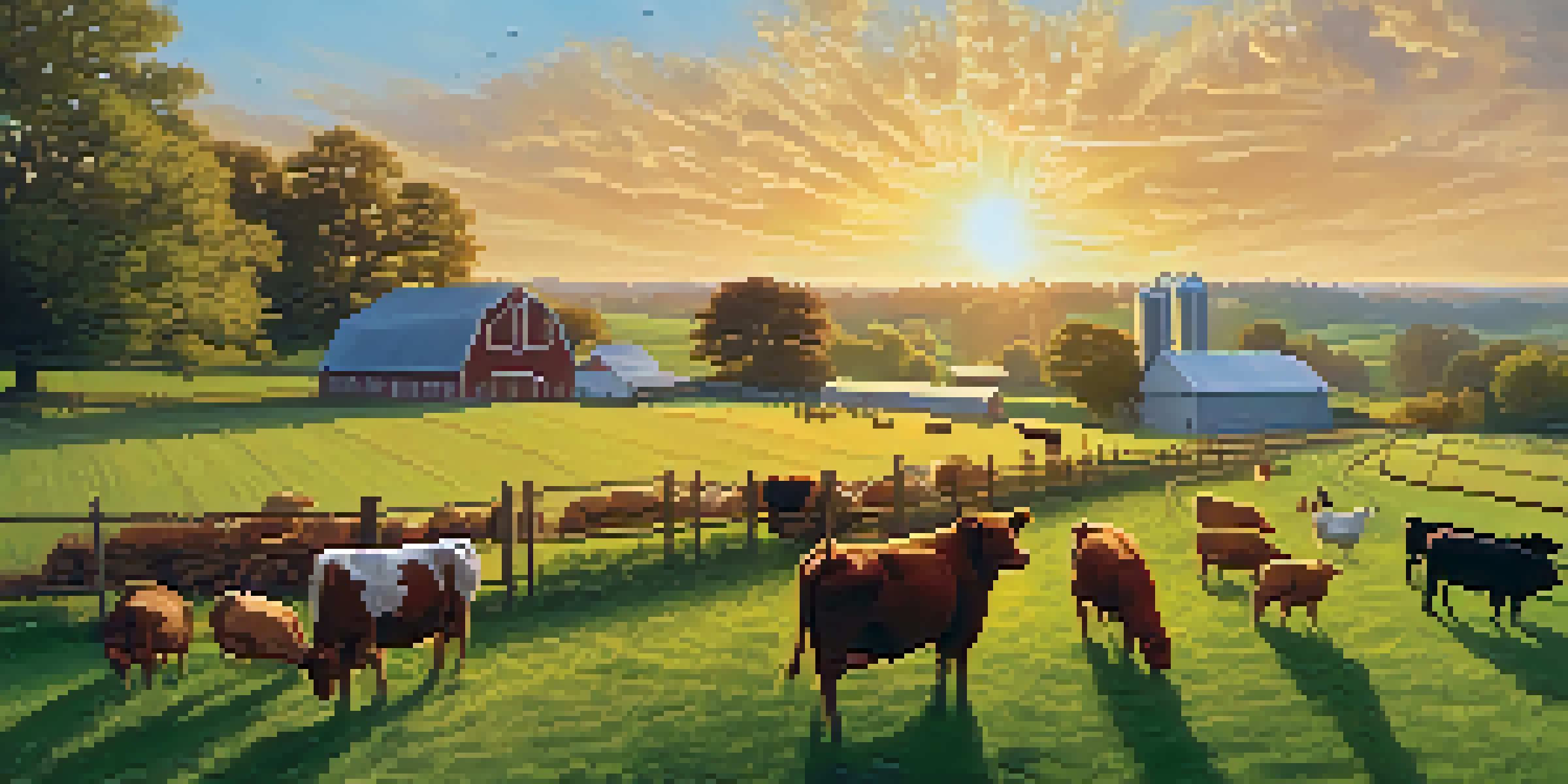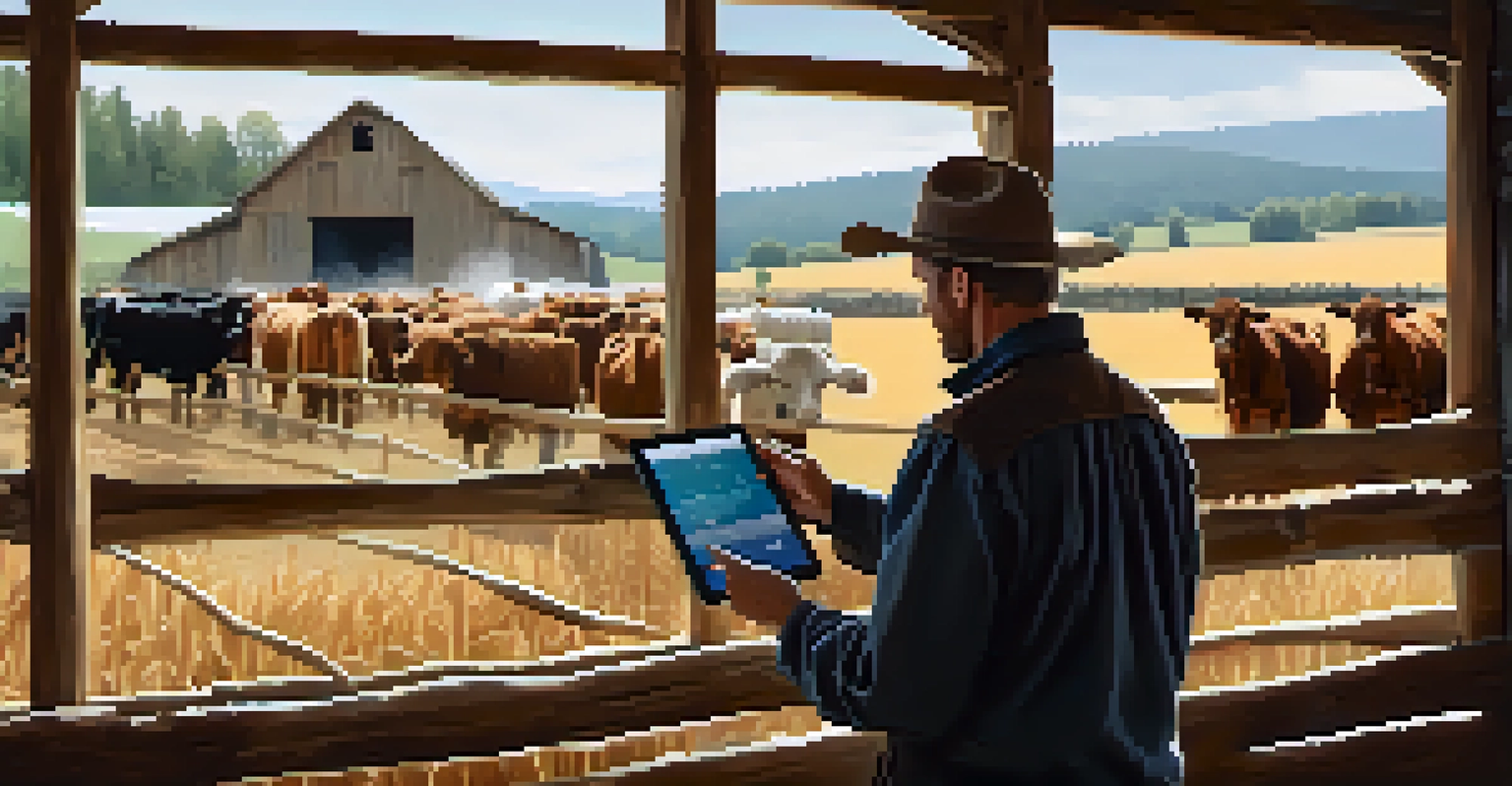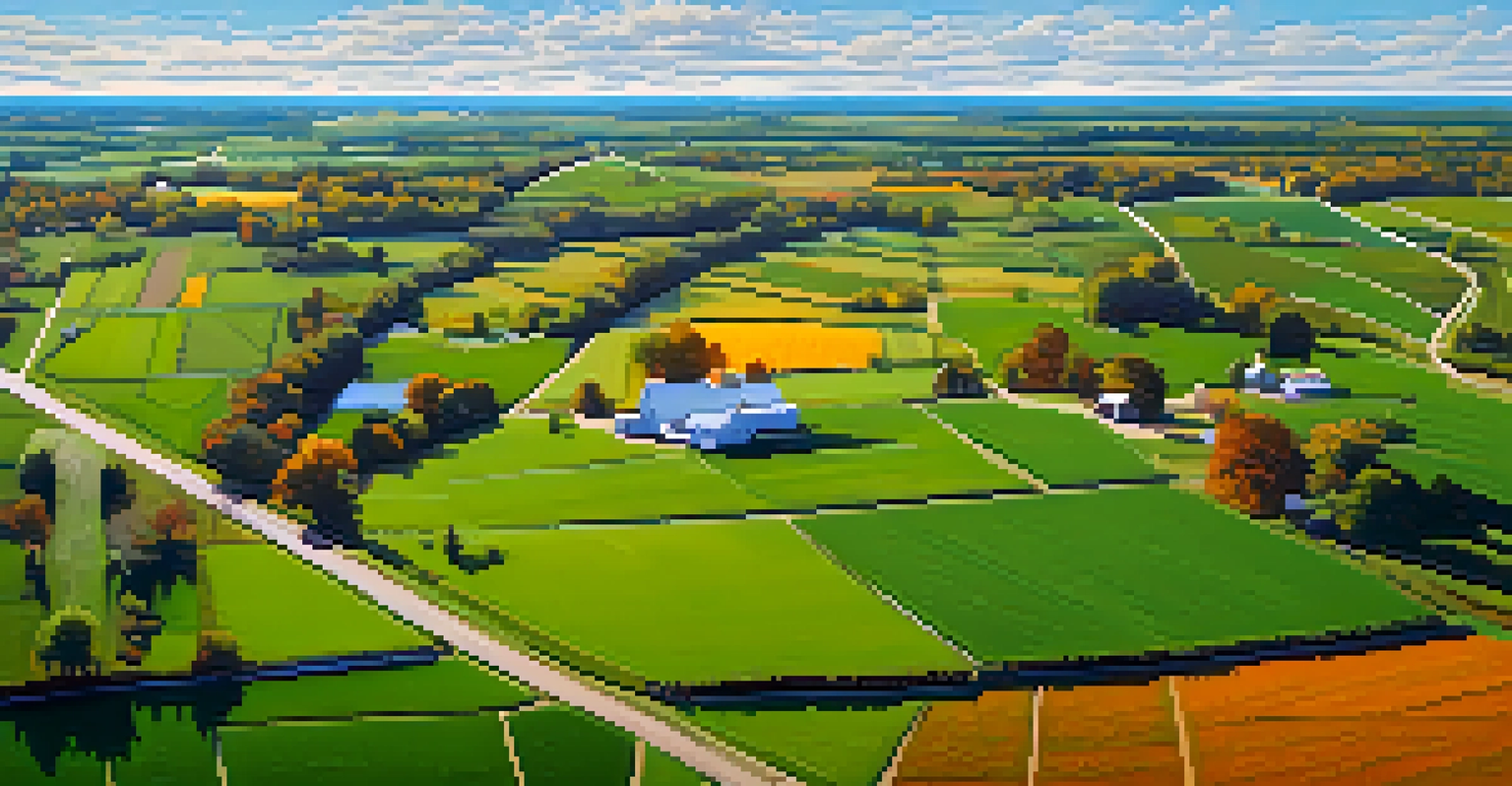Illinois Livestock Industry: Trends and Economic Contributions

Overview of Illinois Livestock Industry Landscape
The livestock industry in Illinois plays a pivotal role in the state's economy and agricultural landscape. With a diverse range of animals including cattle, pigs, and poultry, the sector showcases the state's rich farming heritage. Illinois ranks among the top states in the U.S. for livestock production, providing both jobs and food security.
The future of agriculture is in the hands of those who are willing to embrace change and innovation.
In recent years, the industry has evolved, adapting to changing consumer demands and technological advancements. This evolution has not only increased productivity but also enhanced sustainability practices, making the livestock sector more resilient. By embracing new farming techniques and animal care practices, Illinois farmers are setting a benchmark in the agriculture industry.
As we delve deeper into the trends affecting the livestock sector, it becomes clear that understanding these dynamics is crucial for stakeholders, including farmers, consumers, and policymakers. By grasping the nuances of the industry, we can better appreciate its contributions to Illinois' economy and society.
Economic Contributions of the Livestock Sector
Illinois' livestock industry significantly contributes to the state's economy, generating billions in revenue annually. This sector not only supports farmers but also impacts various related industries, such as feed production, veterinary services, and transportation. The ripple effect of livestock production can be seen in the job creation it fosters, providing thousands of individuals with stable employment opportunities.

Moreover, livestock farming helps maintain rural communities by sustaining local businesses and enhancing the quality of life. When farmers thrive, it leads to a stronger local economy, benefiting everyone from grocery store owners to service providers. This interconnectedness highlights the importance of the livestock sector in fostering regional development.
Economic Impact of Livestock Industry
The livestock sector generates billions in revenue, supporting farmers and related industries, while fostering job creation and regional development.
Additionally, the livestock industry contributes to the state's export market, with Illinois products reaching consumers worldwide. This global reach not only boosts the local economy but also positions Illinois as a leader in the agricultural sector on an international scale.
Trends Shaping the Illinois Livestock Industry
The Illinois livestock industry is experiencing several trends that are reshaping its landscape. One notable trend is the increasing consumer demand for sustainably produced meat and dairy products. As more consumers become conscious of environmental impacts, farmers are responding by implementing sustainable practices that minimize their carbon footprint.
Sustainability is not just a goal; it's a journey that requires commitment and collaboration.
Another significant trend is the integration of technology in livestock management. From precision farming techniques to data analytics, technology is enhancing productivity and animal welfare. Farmers are leveraging innovations such as smart sensors and automated feeding systems to streamline operations and improve livestock health.
Lastly, the rise of plant-based diets is also influencing the livestock sector. While some may view this as a challenge, it has prompted farmers to diversify their offerings and explore niche markets, such as grass-fed or organic products. This adaptability is crucial in ensuring the long-term viability of the industry.
Challenges Facing the Livestock Industry
Despite its strengths, the Illinois livestock industry faces several challenges that could impact its future. One of the primary concerns is fluctuating feed prices, which can significantly affect profit margins for livestock producers. When feed costs rise, it puts pressure on farmers to maintain their operations while ensuring animal health and productivity.
Additionally, regulatory pressures are growing, with stricter guidelines on animal welfare and environmental practices. While these regulations are essential for sustainable farming, they can place a burden on smaller operations that may struggle to comply. Balancing compliance while remaining profitable is a tightrope that many farmers must walk.
Sustainable Practices Gaining Traction
Illinois farmers are increasingly adopting sustainable methods to meet consumer demand and reduce environmental impacts, enhancing the industry's resilience.
Lastly, market volatility poses a constant threat to livestock producers. Economic fluctuations and changes in consumer preferences can lead to uncertainty in pricing and demand. Farmers must stay agile and informed to navigate these challenges effectively.
Impact of Technology on Livestock Management
Technology is revolutionizing the way livestock is managed in Illinois, leading to improved efficiency and animal welfare. One of the most significant advancements is the use of data analytics to monitor livestock health and productivity. By tracking vital signs and behavior patterns, farmers can make informed decisions that enhance animal care and optimize their operations.
Moreover, precision farming technologies allow for more targeted feeding and breeding strategies. Farmers can now utilize GPS and satellite imagery to assess land conditions, enabling them to allocate resources more effectively. This not only increases productivity but also promotes sustainability by reducing waste.
As technology continues to evolve, the potential for innovation in livestock management is boundless. From automated milking systems to biosecurity measures, the integration of modern tools is not just a trend; it’s becoming a vital component of successful livestock farming.
Sustainable Practices in Livestock Production
Sustainability is no longer just a buzzword; it's a necessity in the Illinois livestock industry. Farmers are increasingly adopting practices that promote environmental stewardship while ensuring economic viability. Techniques such as rotational grazing and integrated pest management are helping to maintain soil health and reduce reliance on chemical inputs.
Additionally, many producers are focusing on reducing greenhouse gas emissions associated with livestock farming. This can be achieved through better manure management systems and dietary adjustments that lower methane production. By prioritizing sustainability, farmers are not only meeting consumer demands but also contributing to global environmental goals.
Technology Transforming Livestock Management
Advancements in technology, such as data analytics and precision farming, are improving efficiency and animal welfare in the livestock sector.
Furthermore, collaboration among farmers, researchers, and policymakers is crucial for advancing sustainable practices. Sharing knowledge and resources can lead to innovative solutions that benefit both the livestock industry and the environment, paving the way for a more resilient agricultural sector.
Future Outlook for Illinois Livestock Industry
The future of the Illinois livestock industry appears promising, with several factors contributing to its growth and resilience. As consumer preferences continue to shift towards ethically produced and sustainable products, farmers who adapt to these trends are likely to thrive. This adaptability will be key in maintaining a competitive edge in the market.
Moreover, ongoing advancements in technology and research will further enhance production methods, leading to more efficient and sustainable practices. The emphasis on innovation will not only improve profitability but also attract new entrants into the industry, ensuring its longevity.

Ultimately, with a focus on sustainability, technology, and adaptability, the Illinois livestock industry is well-positioned to overcome challenges and capitalize on opportunities. By embracing these elements, the sector can continue to make significant contributions to the state's economy and agricultural landscape for years to come.